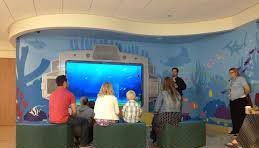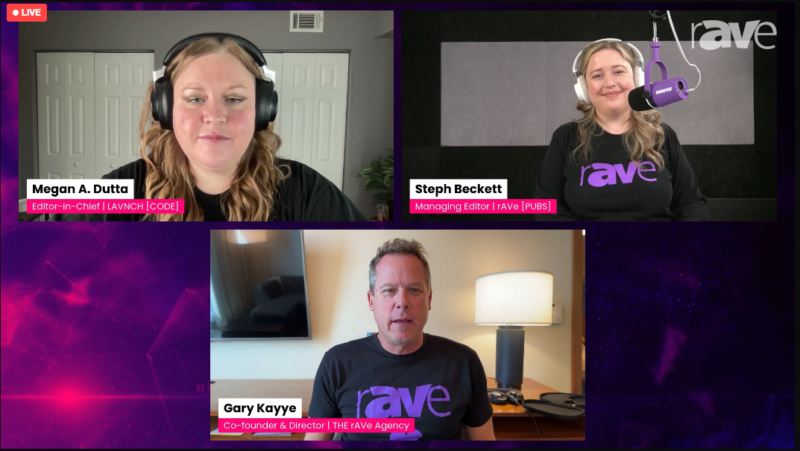AV With a Passion and Purpose
 I have known about this AV/IT and collaborative (could even be videoconferencing) solution for a long time, but I was recently reminded of it and thought I should write a little something about it. This is an AV solution in a medical environment. Sweet right? What can be more purpose driven or allow someone to have more passion about what they do than the medical profession or supplying technology to the medical profession? Well, in this case this technology is not use in patient care, operating rooms or even in physical therapy. However, the technology integration I am going to discuss is one that is incredibly meaningful to a lot of important patients and their siblings and I honestly believe it does help with their healing process.
I have known about this AV/IT and collaborative (could even be videoconferencing) solution for a long time, but I was recently reminded of it and thought I should write a little something about it. This is an AV solution in a medical environment. Sweet right? What can be more purpose driven or allow someone to have more passion about what they do than the medical profession or supplying technology to the medical profession? Well, in this case this technology is not use in patient care, operating rooms or even in physical therapy. However, the technology integration I am going to discuss is one that is incredibly meaningful to a lot of important patients and their siblings and I honestly believe it does help with their healing process.
The AV/IT collaborative system I am talking about is “Turtle Talk with Crush” at Children’s Hospital of Orange County (CHOC) Bill Homes Hospital. This system is a fully interactive experience where the patients and their siblings get to meet and interact with the Disney – Pixar character Crush from the movie Finding Nemo.
The Experience: The guests (children patients, their siblings, family and often some hospital staff who can never seem to get enough of the attraction) are admitted to a movie theater-like room featuring what appears to be a large aquarium-style window opening onto an undersea vista. The children are encouraged to sit on a carpeted area up front so that they may have a better view, while parents and other adults sit on benches behind them. The host and moderator gives a brief introduction to the show, and then Crush swims down to appear in the window. Crush looks and sounds much as he does in Finding Nemo, complete with animated facial expressions and subtle gestures. With the help of the moderator, Crush selects children and adults from the audience and engages them individually in dialogue, asking them questions and responding with quick wit and humor to questions about his life as a sea turtle or any other questions guests choose to ask. Crush individually chooses the children by saying what they are wearing (e.g.: “Oh hey, dudette in the pink shell (shirt) down on the sub floor, what is your name?”).
Other events may occur during this improvised conversation, including cameo appearances by other characters from the original film. Though the format, structure and rough duration of the show are consistent, the show itself varies considerably depending on the guests’ questions and comments. For example, if an audience member asks where Dory is, a special ending involving Dory and a whale will be triggered, complete with another attempt by Dory to speak whale.
To see what the experience is like check out some of the YouTube videos. Here is a link to get you started:
The Technology: The show is a blend of computer graphic techniques, image projection, and interactive improvisation. The “Window to the Pacific” is a large rear-projection screen portraying an animated undersea environment. The animated image of Crush is a computer graphic avatar controlled by a puppet, operated by a backstage actor/puppeteer whose performance is digitized in real time. Crush’s movements and voice-activated lip synch are rendered on the fly and are projected at 60 frames per second, so that the turtle’s mouth moves in synchronization with the actor’s words. Digital puppetry techniques allow the puppeteer’s movements to control the body motions of the projected turtle image. The technology enables each show to be different as Crush responds uniquely to each individual audience.
Using cameras mounted in the theater, the hidden actor can see the audience with whom he is interacting, and thus can refer to the specific appearance and behavior of particular questioners, as well as their location in the theatre. The actor’s performance is a combination of semi-scripted banter and improvised responses to guests’ questions and comments, delivered in a mimicry of the character voice from the film (originally performed by Andrew Stanton).
In theory this technology can easily include videoconferencing or audio and video over IP to accomplish the same and allow for low cost of ownership and low cost of operation since the “talent” would not have to be local to the hospital.
I really hope to see this used in a lot more Children’s Hospitals throughout the world. I love watching the way this impacts the children. This is one great example of when we can be incredibly proud of the industry we are in. Once again I am reminded why there is so much passion and purpose to what we do.





